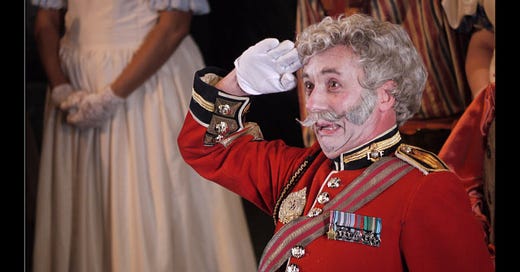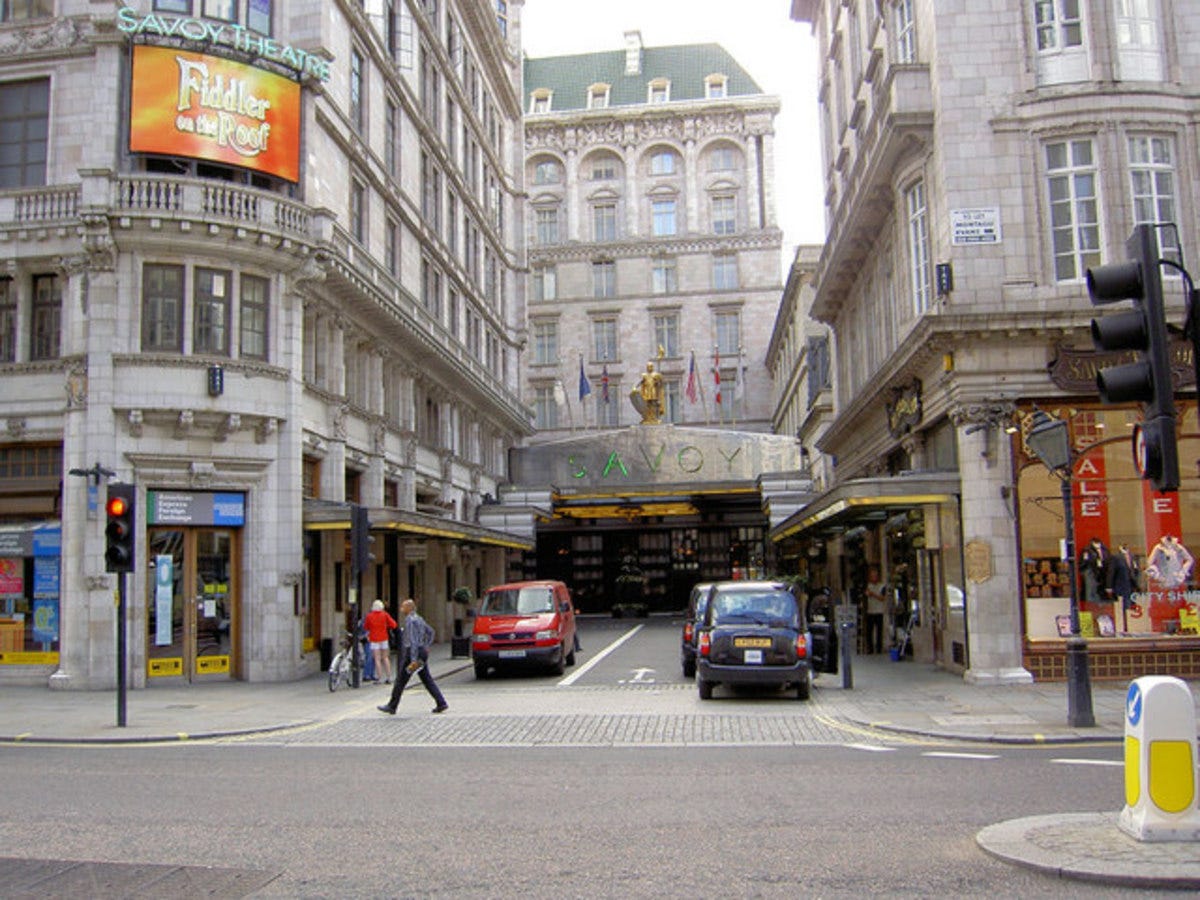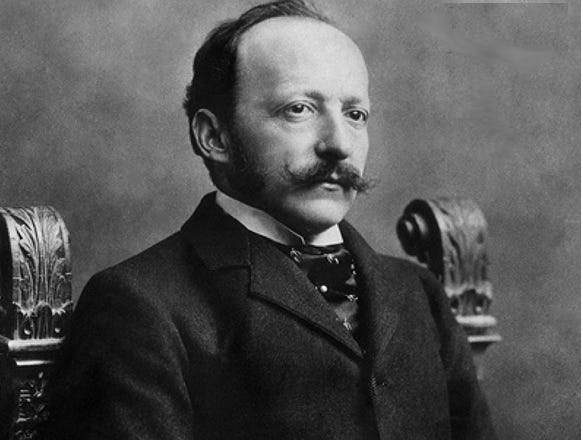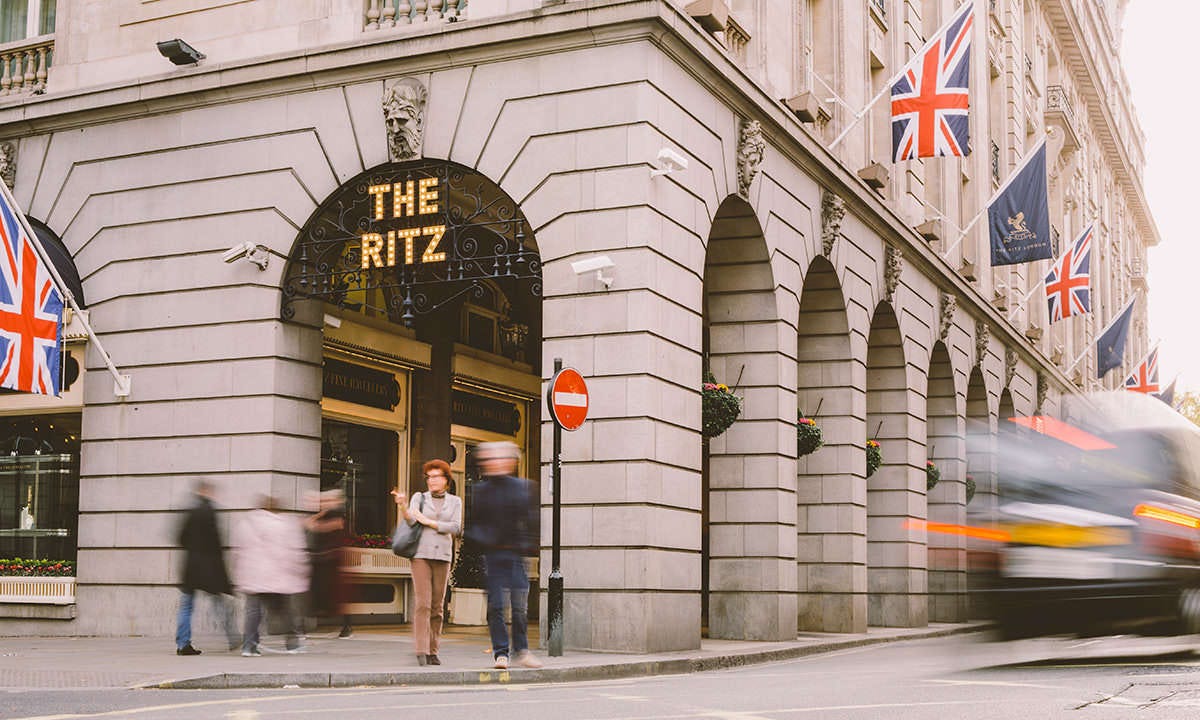Protagonist one
Richard D'Oyly Carte began his professional life in his family’s music publishing business. In his early years he conducted and composed music, and came to the conclusion that ‘respectable, well-crafted family-oriented English comic opera’ could rival the provocative French productions that dominated London's musical theatre scene during the 1870s.
It’s an obviously much more complex tale to be told (elsewhere), but D'Oyly Carte facilitated the partnership between dramatist W. S. Gilbert and composer Arthur Sullivan, nurturing their collaboration across thirteen operettas. He established the D'Oyly Carte Opera Company and constructed the technologically-advanced Savoy Theatre, just off Strand, specifically to present Gilbert and Sullivan productions.
This 1881-built theatre was the first public building in the world to be lit entirely by electricity.
Interesting though all this is, this is not the story I’ll be telling today but rather, what happened next door, and what also happened across town on Piccadilly.
All this new-fangled theatre electricity required electricity to be generated. There was no National Grid and all electricity in the 1880s, for whatever purpose, had to be generated privately and nearby. Therefore countless pirates of Penzance and those on board many versions of H.M.S. Pinafore were lit on stage by an electrical generator built on a plot of land adjacent to the theatre.
Richard D'Oyly Carte was becoming rather rich on the profits from staging Gilbert and Sullivan and to further advance his theatre business, he took many trips to the United States, staying in very opulent American hotels.
He concluded that there was nothing in England on this scale and decided to build a luxury hotel in Britain, to attract a foreign clientele as well as British visitors to London. He would squeeze the generator next door to the Savoy Theatre onto a smaller piece of his land and build a hotel on the newly emptier land.
The theatre’s generator was incorporated into the new hotel and thus they shared the benefits. It became the first hotel to feature comprehensive electric lighting, electric lifts, bathrooms in most of its sumptuously-appointed rooms with constant hot and cold running water. It took five years to build and was financed particularly from profits of staging The Mikado in the Savoy Theatre.
The Savoy Hotel welcomed its first guests on 6 August 1889. This flagship venue initiated the Savoy collection of hotels and restaurants owned by the Carte family for more than 100 years.
D'Oyly Carte made a series of innovative appointments - César Ritz became the Savoy’s manager and Auguste Escoffier was chef de cuisine. Together, these two established remarkable standards of service quality, entertainment with refined dining that attracted aristocracy and other affluent/influential guests.
Ritz mounted a campaign alongside Henry Labouchère, Lord Randolph Churchill and others to "modify licensing regulations that prohibited restaurants from Sunday trading and required closure at 11pm on other evenings." Largely due to his efforts, the Savoy in London went from strength to strength.
Richard D'Oyly Carte had an astonishing and varied CV (see above) but let’s turn our attention to Mr Ritz.
Protagonist two
César Ritz had been born in the Swiss village of Niederwald, the youngest of 13 children in an impoverished farming household. At age fifteen, he began an apprenticeship as a sommelier at a hotel in the Swiss town of Brig. During this trainee position as a wine waiter, the hotel proprietor dismissed him, declaring, "You'll never make anything of yourself in the hotel business. It takes a special knack, a special flair, and it's only right that I tell you the truth - you haven't got it."
Miffed, Ritz departed to new seek opportunities in Paris, arriving during the 1867 Exposition Universelle. Ritz's crucial five-year period in Paris encompassed the 1870-71 siege during the Franco-Prussian War. He joined a prix fixe restaurant owned by the Chevallier family, from which he was sacked for breaking excessive crockery in his eagerness to work quickly. But the period provided him the self-assurance to evolve from a server and general assistant into a maître d'hôtel, manager and eventually hotelier.
He took a position at the prestigious Restaurant Voisin between 1869 and 1872. There he attended to notable patrons including Sarah Bernhardt, George Sand, Edmond de Goncourt, Théophile Gautier and Alexandre Dumas. Under its owner (Bellenger), he mastered the fundamentals of his profession and served unusual dishes such as elephant's trunk in sauce chasseur as fresh meat supplies diminished during the siege, necessitating the use of zoo animals (yuck!) as alternatives.
He did quite a lot over the years and I can’t list all of his progress here but, in passing, Ritz was the first to declare that "the customer is always right". His code was "See all without looking; hear all without listening; be attentive without being servile; anticipate without being presumptuous. If a diner complains about a dish or the wine, immediately remove it and replace it, no questions asked."
We’ll rejoin his story in 1888. Ritz established the Conservations Haus restaurant in Baden-Baden, Germany with Auguste Escoffier serving as chef. Friends of Richard D'Oyly Carte visited the restaurant, and raved about it just at the right time as far as the Savoy Hotel was concerned.
Just about to open its doors, D'Oyly Carte invited the pair to London to become the inaugural manager and chef, roles they took up and occupied from 1889 until 1897. Ritz assembled what he characterised as "a little army of hotel men for the conquest of London". Under his leadership, the Savoy achieved immediate success, drawing a distinguished and wealthy clientele headed by the Prince of Wales and including numerous British and European royal family members.
According to Montgomery-Massingberd, "the outstanding success of the Savoy owed everything to the civilised genius of César Ritz and his brilliant chef, Auguste Escoffier, who introduced the English to the subtlety and delicacy of French haute cuisine and invented at the Savoy many celebrated dishes, including Pêche Melba and the thin toast named after the same singer". Aristocratic women, hitherto unaccustomed to dine in public, were now ‘seen in full regalia in the Savoy dining and supper rooms.’
In March 1898, things took a turn. The Savoy's auditors that month couldn’t account for over £3400 worth of wine and spirits from the cellars. The stock seemed to have disappeared. Digging further into the books, they accused Ritz of accepting illicit payments from suppliers. They presented their findings to D'Oyly Carte.
The narrative differs. In one version, both Ritz and Escoffier were dismissed from the Savoy amid accusations of fraud. Later, Ritz’s widow maintained that he had resigned voluntarily. But the former was most likely the case.
Though Ritz threatened legal action against the hotel company for wrongful termination, Escoffier apparently convinced him against this course, believing their interests would be better protected by keeping the controversy private.
Socialite Lady de Grey demonstrated loyalty to César Ritz by cancelling her scheduled Savoy event upon learning of his dismissal, declaring "Where Ritz goes, I go."
Never one to ignore a grudge, he formed the Ritz Hotel syndicate with South African millionaire Alfred Beit, commonly regarded as the world's wealthiest individual at that time. Together they launched the Hôtel Ritz in Paris's Place Vendôme in late 1898. The opening ceremony on 1 June 1898 attracted numerous European elite figures, including the aforementioned Lady de Grey, the Duke and Duchess de Rohan, Calouste Gulbenkian and - no doubt remembering things past - Marcel Proust.
Unluckily for the grudge, D'Oyly Carte died during 1901 but César Ritz planned a London hotel on Piccadilly to outshine the Savoy anyway.
The Ritz London was constructed on the location of the Old White Horse Cellar, which had become one of England's most renowned coaching inns by 1805. The Ritz's financial supporters acquired the leasehold of the Walsingham House Hotel, partly on the Old White Horse Cellar site, and the freehold of the adjoining Bath Hotel. Demolition of both establishments began in 1904.
The building features neoclassical architecture in the Louis XVI style, constructed during the Belle Époque to resemble an elegant Parisian apartment block above arcades that deliberately evoked the Rue de Rivoli. It represented one of London's earliest substantial steel frame structures, second only to the Savoy Hotel extension of 1903-04.
During the Ritz's construction, a series of events had underscored the necessity for another luxury hotel in London. A Daily Mail article from 3 June 1905 reported that during Derby Week and at the peak of tourist season, hotel accommodation had become virtually unobtainable. The Savoy was forced to decline reservations whilst Buckingham Palace transformed offices into temporary hotel rooms for visitors.
The London Ritz opened in May 1906. Breaking with tradition, the inaugural dinner primarily welcomed journalists rather than socialites, with representatives from prominent publications such as the Daily Mirror, Daily Mail, The Daily Telegraph, The Sydney Morning Herald, The New York Times and the Berliner Tageblatt in attendance. The guest list also featured the building's technical team, including its engineer and architects, alongside senior hotel staff members who attended with their spouses.
Although the Savoy's opening had significantly transformed hotel service standards, Ritz was resolved that his London establishment would exceed its rival in service delivery. The Ritz ensured a consistent supply of hot and cold water to every guest. All bathrooms in the hotel were generously proportioned, each featuring its own heated towel bar.
Ritz avoided using free-standing wardrobes because he worried about dust collecting on them; instead he incorporated cupboards into the rooms with doors that matched the panelling. To this day, it’s a rare hostelry which features a wardrobe rather than a cupboard.
His concerns about cleanliness and hygiene led him to initially have all bedrooms painted white and all beds constructed of brass rather than wood, for the same reasons. Any innovation or potentially beneficial item was made available to guests of the Ritz.
The Ritz truly began gaining prominence towards the conclusion of the First World War, attracting politicians, socialites, writers and actors. David Lloyd George conducted numerous confidential meetings at the Ritz during the latter part of the war and made his decision there to intervene on behalf of Greece against the Ottoman Empire. Noël Coward was a distinguished patron of the Ritz's dining facilities during the 1920s and 1930s.
The Ritz has become so synonymous with elegance and luxury that the word ‘ritzy’ entered the vocabulary to describe something ostentatiously stylish, fancy or fashionable.
In 1913, César Ritz was admitted to a private medical facility in Lausanne, and his death occurred at Küssnacht on 26 October 1918. His final resting place is in his native village.
Hotels at war
The Ritz and Savoy hotels continued their London rivalry, even after the deaths of both César Ritz and Richard D'Oyly Carte.
Right from the beginning, staff poaching was a major complaint from both. César Ritz's rather large address book fell open during 1906 and he enticed expertise and other staff connections from his Savoy days. The Savoy retaliated with pay offers which enticed some of these back. Pay inflation continued over the years with each establishment taking people from their rival.
Both hotels competed to introduce modern amenities. The Savoy was the first hotel in Britain to introduce electric lights, electric lifts, bathrooms in most rooms and constant hot water. The Ritz followed with its own innovations, including two large lead-lined tanks on its roof to provide a steady stream of hot and cold water and ensuring every bedroom in the hotel was provided with its own working fireplace.
Both establishments actively courted high society, royalty and the wealthy elite. The Savoy attracted ‘a distinguished and moneyed clientele headed by the Prince of Wales, including British and European royal families,’ while The Ritz became ‘one of the most popular meeting places of the era for the rich and famous.’
After Auguste Escoffier left The Savoy and began at the Ritz, both hotels competed to offer the finest dining experiences in London.
Many new hotels have since joined the list of luxury accommodation in London. The Savoy and the Ritz continue to head the list. Had £3400 worth of wine and spirits not disappeared from the Savoy’s cellars, the story might have been very different.
NOTES
Many sources I used call Richard D'Oyly Carte ‘Carte’ for short. I preferred the longer ‘D'Oyly Carte’ above. It’s a wonderful name in a way Carte isn’t.
Until death, César Ritz maintained an enduring professional relationship with Auguste Escoffier who is now recognised as the pioneer of modern French cuisine.
I am constantly amazed at the stories of London. Down every side alley and biography are some incredible tales. I hadn’t appreciated what both Richard D'Oyly Carte and César Ritz got up to in each one lifetime. Blimey!










What a great story, thank you for teaching me something I never knew!
Ritz fiddled the booze in the *cellars*, not the sellers. Twice: in the auditors' search, and in your closing remarks.